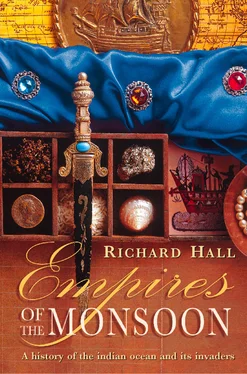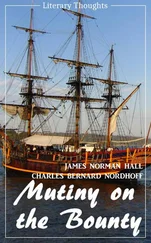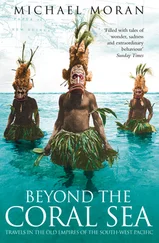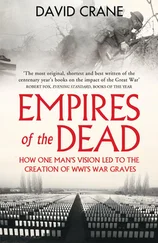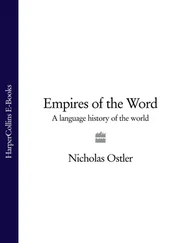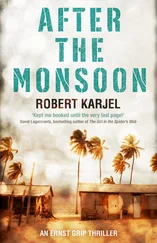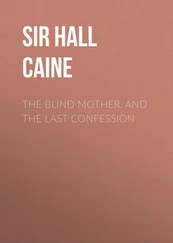He goes into detail about the vegetables grown in Calicut, about which animals are bred for food, the varieties of rice planted and the imports of wheat. He notes that the wealthy people invest in coconut plantations, some growing as many as 3,000 trees; the numerous uses of the coconuts and the trees themselves are carefully listed. The cultivation of pepper on hillside farms, the time of year when it is picked and dried, the prices paid and duties levied by the king; all these are recorded. Ma even gives an account of Indian music, conceding that ‘the melodies are worth hearing’.
He ends his portrayal of Calicut with a graphic account of a gruesome ‘boiling oil’ method used to test the innocence or guilt of miscreants. A cooking pot of oil is heated until leaves thrown into it shrivel up with a crackling noise.
Then they make the man take two fingers of his right hand and scald them in the oil for a short time; he waits until they are burnt then takes them out; they are wrapped in a cloth on which a seal is affixed; he is kept in prison at the office. Two or three days later, before the assembled crowd, they break open the seal and examine him; if the hand has a burst abscess, then there is nothing unjust about the matter and the punishment is imposed; if the hand is undamaged, just as it had been before, then he is released.
Although Ma’s chapter on Calicut stands out from the rest of his book, wherever he goes the oddities of life capture his attention. At times he can be as earthy as Marco Polo in describing social customs, notably in his account of the popular Thai manner of enhancing masculine charms:
When a man has attained his twentieth year they take the skin which surrounds the penis and with a fine knife shaped like the skin of an onion they open it up and insert a dozen tin beads inside the skin; then they close it up and protect it with medicinal herbs. The man waits until the opening of the wound is healed, then he goes out and walks about. The beads look like a cluster of grapes. There is indeed a class of men who arrange this operation; they specialize in inserting and soldering these beads for people; they do it as a profession. If it is the king of the country or a great chief or a wealthy man who has the operation, then they use gold to make hollow beads, inside which a grain of sand is placed, and they are inserted in the penis; when the man walks about they make a tinkling sound, and this is regarded as beautiful. The men who have no beads inserted are people of the lower classes.
He ends blandly: ‘This is a most curious thing.’
Sometimes his anecdotes closely echo those of Marco Polo: ‘If a married woman is very intimate with one of our men from the Central Country [China], wine and food are provided, and they drink and sit and sleep together. The husband is quite calm and takes no exception to it; indeed, he says, “My wife is beautiful and the man from the Central Country is delighted with her.”’
When Ma comes finally to conduct his readers through Arabia and Mecca, all such hints of raciness are absent. It was not merely that as a Muslim he was filled with a sense of reverence for the holy places of his religion, but also that two decades had passed since he first went to sea with one of the great Indian Ocean fleets; he was now in his fifties, accompanying the last of Zheng’s expeditions. Ma must have been surprised that the Three–Jewel Eunuch had won consent, after a gap of ten years, to mount another huge and costly venture to distant lands, because the death of the Yongle emperor in 1424 had seemed to mark the end of an era.
The coterie of predominantly Muslim eunuchs round the emperor had now been challenged by a rival élite, the Confucian civil servants. For six of the intervening years Zheng had been posted as garrison commander at Nanjing, watching his great treasure ships swing idly at their moorings in the Yangtze river. There were signs that the court of the Xuande emperor had turned its back on the idea of asserting a permanent mastery over a vast and dangerous ocean which nowhere touched China’s own borders.
Somehow, however, Zheng managed to override this indifference, and in January 1431 his final voyage began. Many of the veterans of former expeditions were among the 27,550 men under his command; others were performing compulsory service, in obedience to the laws of the Ming era, to expiate crimes committed by their fathers or grandfathers. Calicut was once again the base for the main fleet, and detachments were sent off to various countries. Ma Huan probably went to Arabia as the interpreter for a group of Chinese who took musk and porcelain as their trade goods and returned with sundry ‘unusual commodities’, as well as ostriches, lions and yet another giraffe; such animals were easily transported across the Red Sea from Ethiopia.
As might be expected, Ma offers no criticism of life in Arabia: ‘The customs of the people are pacific and admirable. There are no poverty-stricken families. They all observe the precepts of their religion and law-breakers are few. It is in truth a most happy country.’ When he describes the Ka’ba (House of God), there are many similarities to an account Ibn Battuta had given a century earlier. Ma even goes to the trouble of listing the number of openings (466) in the wall around the Ka’ba, and the exact number of jade pillars on each section of the wall. Although generally accurate, he makes some curious mistakes, saying that Medina, the site of Muhammad’s tomb, was a day’s journey west of Mecca, whereas it was ten days’ distance to the north. He goes on to describe the holy Well of Zamzam as being beside Muhammad’s grave, whereas it is in the centre of Mecca. This must arouse the suspicion that although he certainly went to Arabia he never reached Mecca itself, perhaps because of fighting near the southern end of the Red Sea.
It was a time when Aden was challenging the Mamluke monarchs of Egypt for control of western Arabia, including Mecca and Medina. The instability this caused is shown by the predicament of two large junks, loaded with trade goods, when they reached Aden in June 1432. Their captains wrote letters to the sharifin Mecca and the port controller in Jeddah, seeking permission to sail up the Red Sea. These officials in turn sought the approval of the ruler in Cairo, al-Malik al-Ashraf Barsbay, who said that the junks should be ‘welcomed with honour’. It is not recorded that the ships ever did reach Jeddah; it may have been this disorder which forced Ma in the end to rely upon hearsay about Mecca and Medina.
In March 1433, as the great fleet was reassembling to return to China, the Three-Jewel Eunuch died in Calicut. His body was carried home in one of the treasure ships, to be buried in Nanjing; as was the custom with Chinese eunuchs, his genitals – kept in a sealed jar since his castration – were buried with him, so that he could go complete into the afterlife.
Never again would the great fleets make their majestic progress across the Indian Ocean. Only memories lingered: according to an Arab ambassador who visited India in 1441, the ‘adventurous sailors of Calicut’ liked to call themselves Tchinibetchegan (Sons of the Chinese); by the end of the fifteenth century there were only confused legends of men with strange beards who had arrived in huge ships and came ashore carrying their weapons.
Despite all the imperial honours bestowed upon Zheng He, his lifelong efforts to forge permanent bonds with the lands of the Indian Ocean had come to nothing. China retreated into itself, once more indifferent to the world beyond the straits of Malacca. 4After his death the silken screens of Confucian authority closed around his reputation, and the ‘Star Raft’ records were destroyed. When another influential eunuch, hoping to organize a seaborne attack on Annam, asked to see them, he was told they could not be found. Only at the end of the sixteenth century, 160 years after Zheng’s death, did the author Luo Maodeng try to restore his fame with a 1,000-page novel called The Western Sea Cruises of the Eunuch San Bao (San Bao means Three Jewels). It contained a portrait of the grand admiral, seated aboard his flagship, his features awesome. But the book made little impact, for the civil servants had done their work well, and China’s greatest naval commander was consigned to oblivion. As for Ma Huan, he finally managed to have his book printed in 1451, when he was in his eighties; although he had spent his later life lecturing about his travels, his name was soon forgotten.
Читать дальше
